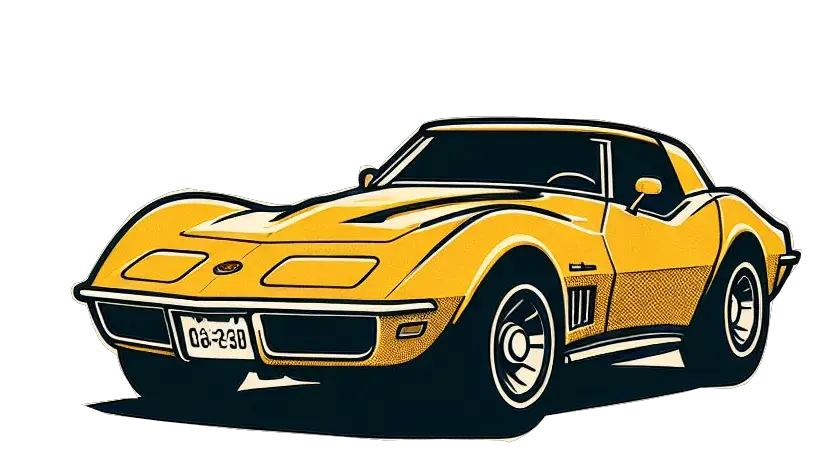C3 Corvette Years 1968-1982: Spotter's Guide
Explore the year-by-year changes of the Corvette C3 from 1968 to 1982
The Corvette C3 Spotter's Guide provides detailed information on the year-by-year changes in the Corvette C3 models from 1968 to 1982, helping enthusiasts identify specific model years based on design and feature variations.
Table of Contents
The history of the Corvette C3: Years 1968 - 1982
The Corvette C3 (third-generation) is a two-seater sports car manufactured by Chevrolet, a division of General Motors Corporation, between the years 1967 (the model year 1968) and 1982. The Mako Shark II concept served as a prototype for the C3 Corvette and the body of the C3 was largely the same as the C2 generation, but otherwise, the design had little in common with the previous generation.
The Corvette C3 is the longest-produced Corvette generation. During its production, the car underwent several technical and design changes.
The Chevrolet 350 was the most common engine type, while the big block was only available as an option from 1968 to 1974. In the early 1970s, the causes of the oil crisis reduced the output of Corvette engines to only 165 horsepower (the year 1975). During the production years of the C3, more than 20 different engine options were available. You can learn more about them in the Corvette C3 engines article.

A manual transmission was available from the factory in all years except 1982. Starting in 1975, automatic transmission Corvettes outnumbered manual transmissions in production.
Quadrajet Carburetors were used in all model years, except for 1982, when Crossfire injection was introduced. The engine control module (ECM or ECU) was first used with the 1980 LG4 engine and since then in all 1981 and 1982 cars. All cars from 1968 to 1980 were manufactured at the St. Louis assembly plant and late 1981 and 1982 cars were manufactured at the Bowling Green assembly plant.
The Corvette C3 retained the Stingray name from the previous model series, but it was discontinued in 1977. This is a common point of debate as to whether all C3 Corvettes are Stingrays even though the emblem was no longer in use. You can read more about this here: Is the Corvette C3 always a Stingray?.
During the production of the Corvette C3, the car underwent several changes. Below, we will take a closer look at the differences between the different model years.
1968 Corvette
Model year 1968 was the first year of the Corvette C3. The C3 generation is often referred to as the "Shark Corvette" due to its shark-inspired design. The 1968 Corvette had a one-piece front bumper and a two-piece rear bumper with chrome bumpers. The car featured pop-up headlights for the first time in the Corvette series. The windshield wipers were hidden behind a vacuum-operated door, and the hood featured a bulge in the middle.
The Corvette C3 was available as a convertible and a coupe with removable T-top roof panels. The rear window of the coupe was removable. The model year 1968 also introduced the Astro Ventilation system, which provided fresh air circulation through vents in the door panels.

The rear bumper of the 1968 Corvette featured a two-piece design with the license plate in the middle. The rear lights were similar to the previous C2 generation, but the backup lights were integrated into the inner taillights.
The model year 1968 is easy to recognize from the door handles, which had a thumb button.
The nose emblem of the 1968 Corvette featured a pair of crossed flags, just like the 1967 C2 Corvette. The crossed flags emblem was also used on the gas lid.
The 1968 Corvette featured a unique ignition console and fiber optic monitoring system. The speedometer and tachometer were placed in front of the driver, while other gauges were in the center console. The car had a three-spoke steering wheel with a large horn button in the center. The steering column was adjustable and featured a telescoping mechanism.
The 1968 Corvette featured steel rally wheels as standard, with optional aluminum wheels. The car had a four-wheel independent suspension system and disc brakes on all four wheels.
Dive Deeper into 1968 Corvette
Full Specifications • Engine Options • VIN Decoder • Color Codes • Production Numbers → Spotter's Guide: 1968–1969 Differences →
1969 Corvette
The year 1969 brought several minor changes, such as a smaller steering wheel, new door handles and steering column lock, and many safety-related changes. The interior was also redesigned to provide more room for both the passenger and the driver. The model year 1969 was also the only year when the side pipes were available as a factory option.
It was the first year for Corvette 350 cu in small block, which replaced the 327 cu in, and also the Stingray front fender emblem appeared.

Dive Deeper into 1969 Corvette
Full Specifications • Engine Options • VIN Decoder • Color Codes • Production Numbers → Spotter's Guide: 1968–1969 Differences →
1970 Corvette
Several changes were made to the 1970 model year, including new fender flares, an egg-crate-style fender grille, and larger, rectangular exhaust outlets. Mechanical changes were e.g. new LT1 small-block, 454 cu in big block, and three-speed manual transmission was replaced by a four-speed manual transmission.
The interior of the 1970 Corvettes was also redesigned to make it even roomier.

Dive Deeper into 1970 Corvette
Full Specifications • Engine Options • VIN Decoder • Color Codes • Production Numbers → Spotter's Guide: 1970–1972 Differences →
1971 Corvette
The changes to the 1971 Corvette from the previous year were minimal, with actual modifications occurring only to the engine. The emission regulations became stricter and because of this, it was the first year when the engines were designed to run on low-octane unleaded gasoline.
Dive Deeper into 1971 Corvette
Full Specifications • Engine Options • VIN Decoder • Color Codes • Production Numbers → Spotter's Guide: 1970–1972 Differences →
1972 Corvette
The 1972 model year was almost identical to the previous year's Corvette, both mechanically and visually.
General Motors started to advertise horsepower as net power, and not measured without additional equipment as before, this reduced the advertised horsepower even though the relative power of the engines was the same.

Dive Deeper into 1972 Corvette
Full Specifications • Engine Options • VIN Decoder • Color Codes • Production Numbers → Spotter's Guide: 1970–1972 Differences →
1973 Corvette
The 1973 Corvette underwent several changes in appearance. Perhaps the most notable change was grille and the chrome nose replaced with safer urethane bumpers required by federal law. In previous year models, the removable rear window became fixed, which increased the size of the "trunk" when the window storage space was no longer needed.
Passenger safety was improved by introducing a steel beam in the doors, which protected occupants in side-impact collisions. New to the 1973 Corvette were radial tires that increased tread, wet grip, and stability at higher speeds.

Dive Deeper into 1973 Corvette
Full Specifications • Engine Options • VIN Decoder • Color Codes • Production Numbers → Spotter's Guide: 1973–1974 Differences →
1974 Corvette
In 1974, a new federal safety law (five-mile-per-hour impact standard) came into effect, which is why the rear bumper was also changed to urethane bumpers (1974 is the only year with a two-piece rear bumper due to manufacturing issues.)
Another improvement affecting safety was the integration of lap and shoulder belts in the 1974 coupe, this was still an option in the convertible.
The model year 1974 was the last year for the true dual exhaust and 454 cu in big block engine.
The alarm switch moved from the back of the car to the left front fender.

Dive Deeper into 1974 Corvette
Full Specifications • Engine Options • VIN Decoder • Color Codes • Production Numbers → Spotter's Guide: 1973–1974 Differences →
1975 Corvette
The appearance of the 1975 model was almost identical to the previous year's model. The visible changes included front and rear bumper pads and a one-piece rear bumper.
1975 was the last year a convertible was available in the C3 generation and the first year catalytic converters were introduced.
Technical changes included an electronic ignition system (HEI) and electronically driven tachometers.

Dive Deeper into 1975 Corvette
Full Specifications • Engine Options • VIN Decoder • Color Codes • Production Numbers → Spotter's Guide: 1975–1977 Differences →
1976 Corvette
Changes to the exterior of the 1976 Corvette were minor. Most notable was the removal of the Corvette's Astro ventilation system and rear deck vents, a new one-piece rear bumper emblem, and the final year for the Stingray fender emblems.
There were no major changes in the interior either. The reception of the Vega-style steering wheel was divided among enthusiasts, and even today there are several instructions on the Internet for replacing a 1976 model year steering wheel.
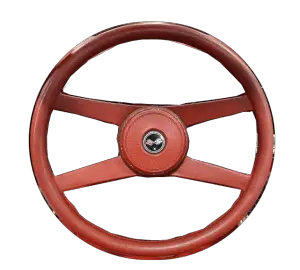
Dive Deeper into 1976 Corvette
Full Specifications • Engine Options • VIN Decoder • Color Codes • Production Numbers → Spotter's Guide: 1975–1977 Differences →
1977 Corvette
1977 was the last year of the vertical rear window and did not include any major mechanical changes from the previous year.
Some changes were made to the interior, which included new climate controls, dashboard gauges, and leather upholstery became standard equipment.
The Stingray emblems were removed from the fenders and replaced with cross-flag emblems. In 1977, a deck-mounted luggage rack was added as a factory option, whereas previously, it had been available as a dealer-installed option.

Dive Deeper into 1977 Corvette
Full Specifications • Engine Options • VIN Decoder • Color Codes • Production Numbers → Spotter's Guide: 1975–1977 Differences →
1978 Corvette
In 1978, the 25th anniversary of the Corvette was celebrated and two Special Editions were released to celebrate it: the Silver Anniversary and the Indy 500 Pace Car.
A new fastback rear window and a redesigned interior were big visible changes compared to the previous year.
All 1978 model-year Corvettes received special anniversary nose emblems, the technical changes themselves were minor.

Dive Deeper into 1978 Corvette
Full Specifications • Engine Options • VIN Decoder • Color Codes • Production Numbers → Spotter's Guide: 1978–1979 Differences →
1979 Corvette
1979 didn't bring any major changes to the Corvette, except for the addition of new sport seats as standard equipment and, the front and rear spoiler packages which were introduced in the previous year's Pace car special edition.
Chevrolet produced 53,807 Corvettes in 1979, the highest production volume in the entire history of the C3.
The 1979 Corvette was the last model when a manual transmission could be ordered with the L82 engine.

Dive Deeper into 1979 Corvette
Full Specifications • Engine Options • VIN Decoder • Color Codes • Production Numbers → Spotter's Guide: 1978–1979 Differences →
1980 Corvette
In 1980, strict emissions regulations caused changes to the engines, the biggest hit being the California cars, which were only available with a 305 cu in V8 producing 180 horsepower. This engine was equipped with a computer command control system (CCC), which became standard on all engines the following year.
Corvette designers aimed to reduce the car's weight, which resulted in better overall gas mileage results. The most visible changes from this were redesigned hood, front, and rear bumper covers.

Dive Deeper into 1980 Corvette
Full Specifications • Engine Options • VIN Decoder • Color Codes • Production Numbers → Spotter's Guide: 1980–1982 Differences →
1981 Corvette
The year 1981 brought major changes to Corvette production, the St. Louis plant stopped making Corvettes, and production was moved to the modern Bowling Green plant.
This was the first time the Corvette C3 had only one engine option, the new L81 replacing the L48 and L82 engines that were available in previous model years.
The 1981 model year was the last year of the manual transmission and, exceptionally, the manual transmission was also available for California cars.
Dive Deeper into 1981 Corvette
Full Specifications • Engine Options • VIN Decoder • Color Codes • Production Numbers → Spotter's Guide: 1980–1982 Differences →
1982 Corvette
The final year of the Corvette C3 saw the introduction of new features designed for the Corvette C4, such as the Crossfire injection and TH700-R4 automatic transmission with overdrive.
The visual changes were minor, except for the Collectors Edition, which contained plenty of unique features.

Dive Deeper into 1982 Corvette
Full Specifications • Engine Options • VIN Decoder • Color Codes • Production Numbers → Spotter's Guide: 1980–1982 Differences →
Corvette C3 - Quick year-by-year summary
A summarized overview of the major exterior and technical changes per model year.
| Year | Key visual / body changes | Engine / drivetrain highlights | Notable options / production notes |
|---|---|---|---|
| 1968 | One-piece front bumper, two-piece chrome rear bumper, pop-up headlights | Available big-block options; 327 replaced by 350 | Convertible + coupe with removable rear window; Astro Ventilation |
| 1969 | Smaller steering wheel, new door handles; Stingray fender emblem introduced | First year for 350 cu in small block | Factory side pipes (one-year option) |
| 1970 | Fender flares, egg-crate fender grille | LT1 small-block, 454 big-block option | 4-speed manual replaces 3-speed |
| 1971 | Minor visual updates | Engine changes for emissions; unleaded fuel compatible | Safety changes (steering column lock) |
| 1972 | Very similar to 1971 | GM switches to net horsepower ratings | Minimal visual change |
| 1973 | Urethane front bumper; fixed rear window (late C2 carryover ends) | Emissions-driven power reductions begin | Radial tires introduced; improved side-impact protection |
| 1974 | Two-piece urethane rear bumper (unique to 1974) | Last year for true dual exhaust and 454 big-block | Lap and shoulder belts added to coupe |
| 1975 | One-piece rear bumper, bumper pads | Catalytic converter introduced; HEI ignition | Last year for convertible in C3 |
| 1976 | Removal of deck vents, final year for Stingray fender script | No major power upgrades | Vega-style steering wheel; interior changes |
| 1977 | Last vertical rear window year; new cross-flag emblems | Minor | Leather becomes standard; sport mirrors option introduced |
| 1978 | Fastback rear window, 25th anniversary editions | Minor | Pace Car Replica and Silver Anniversary special editions |
| 1979 | Sport seats standard; spoiler packages available | L82 last manual-available pairing | Highest C3 production year (53,807) |
| 1980 | Redesigned hood and bumper covers; black grille insert | CCC engine control on some engines; CA 305 V8 for California | Weight reduction focus |
| 1981 | Production moved to Bowling Green late in year | Single engine option L81; manual still present | St. Louis plant closed |
| 1982 | Minor visual tweaks; Collector's Edition | Crossfire fuel injection introduced; TH700-R4 automatic | No factory manuals; many Crossfire cars converted back to carburetors |
C3 Corvette years to avoid
When you search for "C3 Corvette years to avoid" on the internet, you'll encounter numerous articles cautioning against specific model years due to minor issues when the car was new or lower horsepower in newer C3 models (if you wish to, it's relatively easy to increase the horsepower of a Chevrolet 350).
So, in my opinion, the question of which year models to avoid is unnecessary. Each C3 model year has its own merits. Given that these cars are now at least 40 years old, it's crucial to regard them as distinct entities and select a model year based on your specific preferences and what you seek in a Corvette.
The chrome bumper models (1968 - 1972) are often considered more attractive, offering higher engine power compared to the later models, but they do come at a higher price point. If you're searching for an affordable cruising car, the newer models from 1973 to 1982 are an attractive option. Do you desire a convertible (1968-1975) or a big block (1968 - 1974)? Manual transmissions are also favored, although they were produced in significantly fewer C3s in later years (and in 1982 none at all). It's worth noting that in some states or cities, there may be no emissions regulations for older cars, which can influence your year model choice.
Particularly if your aim is to preserve the originality of your Corvette, it is good to know that early 1968 models feature rare, hard-to-find parts. Additionally, the 1977 model has one-year-only interior parts that are a challenge to locate.
The introduction of the Computer Command Control (CCC) system in 1981 made engine modifications and tuning more complex, often requiring specialized equipment. In 1982, the Corvette introduced the infamous "Crossfire Injection" system, intended to enhance fuel efficiency. Many enthusiasts consider this C3 Corvette model year to be one of the less desirable choices due to the problematic engine setup. As a result, many have converted these cars back to traditional carburetors, removing the computerized systems.
Corvette C3 spotters guide
The Corvette C3's appearance exhibited slight variations from one year to another. Here are some suggestions to help you distinguish between different model years while on the road. While the most definitive way to determine the model year is by inspecting the Corvette's VIN, here are some extra hints for easier identification between different years.
1968 - 1969
In 1968, the C3 Corvette made its debut, introducing the iconic "Coke Bottle" styling. While the new C3 retained a body largely similar to the C2 generation, it also boasted improved aerodynamics compared to its predecessor.
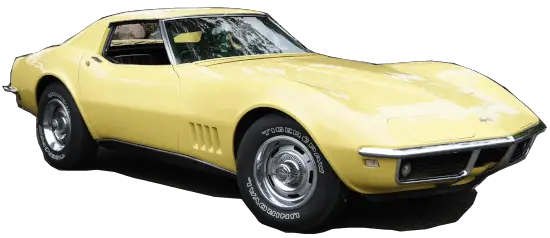
The distinguishing feature of the 1968 model year is the key lock, which includes a thumb-operated opening latch. In contrast, from 1969 onwards (as shown on the right), there is a more straightforward key lock with the opening activated by pushing in the finger plate.

The Stingray emblem is not present on the 1968 Corvette; it was used on Corvettes from 1969 to 1976. For more information on emblem history, feel free to check out the article about Corvette C3 Stingray.

1970 - 1972
The exterior differences between the Corvette model years 1970 to 1972 were minimal, but there were a few changes compared to the 1968 and 1969 Corvettes.
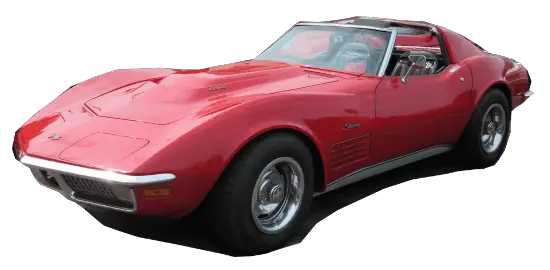
In the model years 1970 to 1972, the egg-crate style fender grill was introduced and was no longer functional as it had been in earlier years. There are minor differences between the years in how the grills were painted and how the chrome appeared, but these distinctions are not visible from a distance.

The eggcrate front grill made its debut in 1970 and remained unchanged through 1972. In 1970 Corvettes and early 1971 models, the turn signals featured clear lenses with an amber bulb, whereas late 1971 and all 1972 Corvettes were equipped with amber lenses.

1973-1974
The 1973 Corvette underwent various appearance changes, with a distinctive feature being the combination of chrome bumpers at the rear and non-chrome bumpers at the front, making it easy to identify this particular year.

The Corvette's new body-colored, urethane front bumper met Federal Government five mph impact standards and remained unchanged through the 1974 model year. In 1974, the Corvette received a urethane cover for its rear bumpers, featuring a distinctive two-piece design unique to that year.

The eggcrate front grille was replaced with a single slot design in 1973, and this design continued through 1979.

In the model year 1974 (and late 1973), a unique feature was present: it was the only year without a gas lid emblem.
1975 - 1977
The exterior differences among the Corvette model years from 1975 to 1977 were few, with a notable change being that 1975 marked the final year for a convertible model.
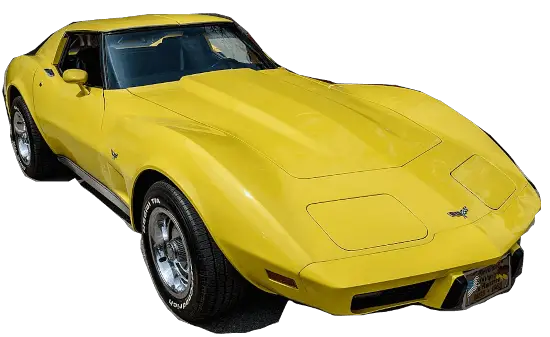
In the years 1975 - 1977, the front bumper no longer featured straight lines on each side of the V, and rubber pads were introduced on the rear bumper as well.

The nose emblem underwent a change from the previous year, with the removal of the text "Chevrolet Motor Division Corvette". This emblem was in use from 1975 to 1976, and the 1977 Corvette featured a new crossflag design emblem." For more details, you can refer to the article on Corvette C3 Emblems.
In 1975, the rear bumper adopted a one-piece design, and rubber pads were as bumper guards. In 1976, a new one-piece Corvette emblem replaced the Corvette letters on the rear bumper, while the rest of the rear bumper remained unchanged.

Another visual change in 1976 was the removal of the rear deck vents.

The Stingray script on the fenders was removed in 1977, and a new crossed flags emblem was introduced, appearing on the fenders, front-end, and fuel filler door. However, early 1977 Corvettes did not feature the fender emblems.

In 1977, a new option emerged: sport mirrors could be ordered as replacements for the chrome ones, and over 40% of 1977 Corvettes were equipped with them. The option for sport mirrors continued until 1980 when it became a standard feature.
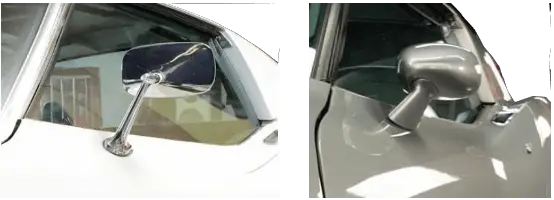
1978-1979
A significant visual change from the previous year was the introduction of a new fastback rear window, a feature that continued throughout the rest of the Corvette C3's production years until 1982. In 1978, marking the Corvette's 25th birthday, the Pace Car Replica and Silver Anniversary Edition were offered.

In honor of the 25th anniversary, all 1978 Corvettes featured special Anniversary emblems on both the nose and the gas lid, while the model year 1979 continued to use the same cross-flag emblems as 1977.

In 1979, front and rear spoiler packages were introduced as options, which had been previously featured in the Pace Car special edition from the previous year.
1980 - 1982
In its last three years, the Corvette went through several significant changes, such as the redesign of the hood, front, and rear bumpers with integrated spoilers. Additionally, Chevrolet introduced the Corvette Collector Edition to celebrate the end of the C3 generation in the year 1982.

From 1980 to 1982, Corvettes featured a black insert instead of the eggcrate front grille, and in 1982, General Motors introduced the "Cross Fire Injection" emblem to signify the new engine. Notably, there were no fender emblems on the 1980 and 1981 models, except for the 1980 L82-engined cars, which featured an L82 emblem.

In other aspects, the exterior appearance for the 1980 and 1982 model years remained mostly consistent, with one minor difference: the outline of the nose emblem transitioned to black in 1981, departing from the chrome outline seen in the 1980 model. Additionally, the 1982 model brought forth a new design for the nose emblem.
See also Corvette C3 Specs by year
Other articles
General
- Corvette C3 years
- Corvette Specs, Colors, etc. by year:
1968 1969 1970 1971 1972 1973 1974 1975 1976 1977 1978 1979 1980 1981 1982 - Is the Corvette C3 always a Stingray?
- Corvette C3 charts
- Corvette C3 books
- Mako Shark II
- Corvette L88
- Greenwood Corvettes
- Reader's Wheels: Corvette 1968
- Restomod Corvette C3s
- Corvette C3 Buyer's Checklist
Technical
Interior and Exterior Features
Share Your C3 Knowledge
Have insights to share? We welcome your expert feedback, technical discussions, and Corvette-related stories. Your contributions help keep this Corvette community thriving! Join the conversation below.
